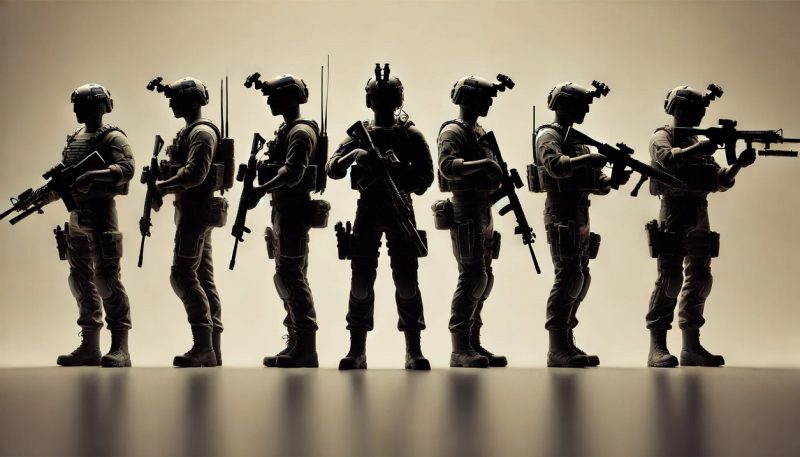Having a Go Bag is not only mandatory to the bodyguards or tactical operators. It easy can be implemented into civilian life as well. Your Go Bag needs to be packed at all times, on a task, or at home. It allows the user to deploy at a moment’s notice to the farthest reaches of the world knowing that they have the kit and equipment to last several days.
That means, no matter if you are a soldier, bodyguard, military contractor, or just civilian, you will be ready to go anywhere in the world by the shortest period of time necessary. And it means most of the time, it will be on foot. No matter if you will have shelter in an apartment, or in car, the Go Bag almost all the time will be needed while being on foot.
Sheltering in place or in an automobile will always be the preferable alternatives to traveling on foot in almost any emergency, but the go bag is meant to suit on foot travel: that most-dire of situations.
Standard Go Pack Configuration
A go bag is normally a shoulder carried backpack/daysack – small enough to use as carry-on baggage, large enough to hold the following list:
- Cash – Home currency and USD ($), the bodyguard won’t always know where he/she will end up, USD can be put to use almost anywhere, but the home currency cannot (unless it happens to be USD).
- Credit card(s) with a good limit.
- Passport(s) (professional bodyguards may have more than one passport and will try and keep one free of stamps or visas)
- Quad-band dual-sim mobile phone (or a cheap mobile that will hold foreign sim cards)
- Solar-powered charger with multiple adapters (for phone, laptop, etc.)
- Travel plug
- Watch (capable of displaying different time zones without the need for manual adjustment)
- Compact first aid kit including headache tablets, antiseptic cream, mosquito repellant, antihistamine, and sunblock.
- Purification tablets
- Compass
- Compact torch, good quality.
- Lighter
- Wash kit (ensure aerosols/liquids adhere to airport quantity restrictions)
- Sewing kit
- Lightweight blanket
- Notebook and pen
- Laptop + Data Stick (8+ Gb at least)
- Camera
- Three pairs of socks / underwear
- Spare shirt
- Boot polish
- Lightweight sprays jacket
- Small umbrella
- GPS
- Spare batteries
- Shemagh
A shemagh. You need to be careful with this one, because this is a ‘just shoot me’ type of garment in the wrong context. The purpose is not for the mental image that word brings, but think of the cloth.

No, you don’t want to be seen as some sort of terrorist or counter-terrorist, but aside from the Desert, to keep out the dust and sun, there are some uses for that cloth that most don’t think about. And it will conceal your form and face somewhat. It will keep out the bugs.
A shemagh makes a handy scarf for both cold and hot weather. In hot weather, pour water on it. A shemagh can also be used as a loot sack, place items in the center, pull the corners together, the ones across from each other and tie them.

Hostile Environment Equipment Considerations
- Slimline molle plate carrier and ballistic internal liner
- Minimum Level III Ballistic plates
- Single point sling (will attach to most assault rifles)
- Grab bags (minimal trauma kit, survival kit, emergency comms)
Tactical operators, bodyguards and military contractors will always pack their go bag with the assumption they will be boarding a plane and will be subject to the standard security checks.
- All baggage is usually plain civilian styling, no military-style bags.
- Nothing on the baggage will identify the bodyguard’s nationality (such as patches/badges of flags etc.)
- All items will be padlocked.
- All identification will be on the bodyguard, not in the baggage, including copies of this documentation.
Go Bag adds for Covid-19 pandemic
It depends on if you will actually be evacuated from an area due to a pathogen. If not, then increase minimally or not beyond what you’d normally outfit in the kit should this be a new consideration.
Sanitary and antiseptic supplies have been mentioned and those are worthy considerations. Just note that liquids (or anything “wet”) have special handling issues when transporting the kit.
Measures to relieve symptoms are also a worthy consideration, but if one adds these to their supplies, they need to take special note to cycle these as their shelf life is usually shorter than other supplies in the kit.
This list is just an example of what can be carried, different bodyguards favor different configurations and it is also task-dependent.






